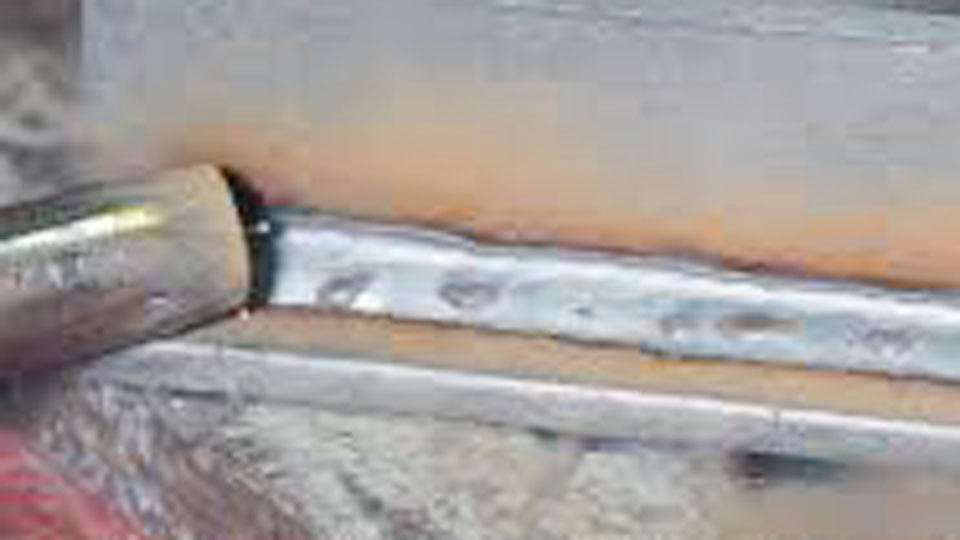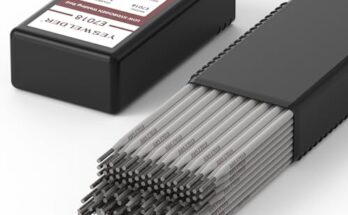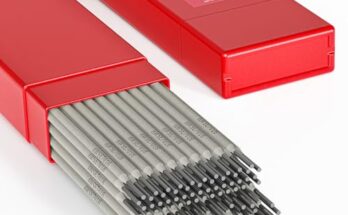If you’ve ever wondered how to weld mild steel, you’re not alone. When I first started welding, mild steel was one of the most approachable materials to work with. It’s affordable, readily available, and forgiving, which makes it ideal for beginners and professionals alike. The best part? With a little practice and the right guidance, anyone can learn how to weld mild steel successfully.

Image by TopwellWeldersOfficial
I’ll walk you through the process step by step, sharing everything I’ve learned about welding mild steel. Whether you’re planning a DIY project or looking to refine your skills, this guide has you covered.
What Is Mild Steel and Why Weld It?
Before diving into the welding process, it’s important to understand what mild steel is. Mild steel is a type of low-carbon steel with a carbon content of around 0.05% to 0.25%. This low carbon level makes it ductile, malleable, and easy to weld.
Why Choose Mild Steel?
- Affordability: It’s one of the most cost-effective metals on the market.
- Versatility: Mild steel is used in everything from construction to automotive repair.
- Ease of Welding: Its low carbon content minimizes the risk of cracking, making it beginner-friendly.
Tools and Materials You’ll Need
Welding mild steel requires a few essential tools and materials. Here’s a handy checklist to get you started:
| Tool/Material | Purpose |
|---|---|
| Welding Machine | MIG, TIG, or Stick welder, depending on preference. |
| Mild Steel Workpiece | The material you’ll be welding. |
| Welding Wire or Rod | Chosen based on your welding method. |
| Protective Gear | Welding helmet, gloves, jacket, and boots. |
| Clamps or Vice | To secure the workpiece in place. |
| Wire Brush or Grinder | For cleaning the metal surface. |
| Measuring Tools | Tape measure, ruler, or square for precision. |
Preparing Mild Steel for Welding
Preparation is key to achieving strong, clean welds. I’ve learned the hard way that skipping these steps can lead to poor results.
Clean the Surface
Remove any dirt, rust, or grease using a wire brush or grinder. A clean surface ensures better weld penetration and reduces contamination.
Cut and Fit the Pieces
Use a saw or cutting torch to shape your steel pieces as needed. Ensure they fit together snugly, as gaps can weaken the weld.
Secure the Workpiece
Clamp the steel securely to prevent movement during welding. Even a slight shift can disrupt your weld.
Choosing the Right Welding Method
There are several methods to weld mild steel, each with its pros and cons. The best choice depends on your equipment, skill level, and project requirements.
MIG Welding (Metal Inert Gas)
This is the most beginner-friendly method and one of my personal favorites. It uses a continuous wire feed and shielding gas to protect the weld.
- Advantages: Easy to learn, fast, and produces clean welds.
- Best For: Thin to medium-thickness steel.
TIG Welding (Tungsten Inert Gas)
TIG welding is more precise but requires a higher skill level. It uses a non-consumable tungsten electrode and shielding gas.
- Advantages: Precise, produces high-quality welds.
- Best For: Thin materials or projects requiring a clean finish.
Stick Welding (Shielded Metal Arc Welding)
This method uses a consumable electrode coated in flux, making it ideal for outdoor work.
- Advantages: No shielding gas required, works well on dirty or rusty steel.
- Best For: Thick materials and heavy-duty applications.
Setting Up Your Welding Machine
Proper machine setup is crucial for a successful weld. Here’s how I usually set up my welder:
Choose the Right Settings
Adjust the voltage and amperage based on the thickness of your steel. Most welders include a chart to guide you.
Select the Correct Wire or Rod
For MIG welding, use ER70S-6 wire. For stick welding, an E6013 or E7018 rod works well.
Test on Scrap Metal
Before starting your actual project, practice on a piece of scrap steel. This helps you fine-tune your settings.
How to Weld Mild Steel: Step-by-Step
Now, let’s get to the actual welding process.
Strike an Arc
Position your electrode or wire close to the steel and strike an arc. For beginners, this may take a few tries.
Maintain a Steady Angle
Hold the welding gun or electrode at a consistent angle, usually around 15-20 degrees. This ensures an even weld bead.
Move at a Consistent Speed
Move the torch or electrode steadily along the joint. Too fast, and you’ll miss penetration; too slow, and you’ll risk burn-through.
Watch the Weld Pool
Keep an eye on the weld pool. It should flow smoothly, indicating proper heat and speed.
Clean the Weld
After finishing, let the weld cool and clean off the slag with a wire brush or chipping hammer.
Challenges and How to Solve Them
Even with the best preparation, welding can come with its fair share of challenges. Here’s how I tackle some common issues:
- Excessive Spatter: Check your voltage and wire speed settings.
- Poor Penetration: Increase the amperage or slow down your travel speed.
- Cracks in the Weld: Ensure proper cleaning and preheat thicker materials if needed.
- Porosity (Holes in Weld): Avoid drafts and ensure your shielding gas flow is consistent.
Tips for Better Welds
- Practice Often: The more you weld, the better you’ll get.
- Use Proper Ventilation: Always weld in a well-ventilated area to avoid inhaling harmful fumes.
- Inspect Your Welds: Look for consistent width and depth. Practice makes perfect!
Comparing Welding Methods for Mild Steel
Here’s a quick comparison to help you decide which method suits your needs:
| Method | Skill Level | Best For | Pros | Cons |
|---|---|---|---|---|
| MIG Welding | Beginner | Thin to medium steel | Easy to learn, clean welds | Requires shielding gas |
| TIG Welding | Advanced | Thin materials | Precise, high-quality finish | Slower, requires more skill |
| Stick Welding | Beginner-Intermediate | Thick materials | No gas required, versatile | Produces more slag and spatter |
Conclusion
Welding mild steel is an incredibly rewarding skill that opens up countless possibilities for projects, repairs, and creative endeavors. Whether you’re fixing a gate, building a frame, or experimenting with your first welding project, mild steel is the perfect material to start with.
By choosing the right tools, preparing your materials, and practicing the techniques I’ve shared, you’ll be well on your way to creating strong, clean welds. And remember, every welder starts as a beginner, so don’t be afraid to make mistakes and learn along the way.
FAQs
Can I weld mild steel with a TIG welder?
Yes, TIG welding is an excellent choice for mild steel, especially for thin materials.
Do I need shielding gas for MIG welding mild steel?
Yes, shielding gas like CO2 or a CO2-argon mix is essential for MIG welding mild steel unless you’re using flux-cored wire.
What’s the best wire for MIG welding mild steel?
ER70S-6 wire is commonly used for mild steel due to its versatility and ease of use.
How thick can I weld mild steel with a stick welder?
Stick welders can handle mild steel up to 1/2 inch thick or more, depending on the amperage and electrode used.
Why is my weld cracking?
Cracking can occur due to contamination, improper settings, or insufficient preheating for thick materials.
Take your time, enjoy the process, and soon you’ll see just how satisfying it is to master welding mild steel!


